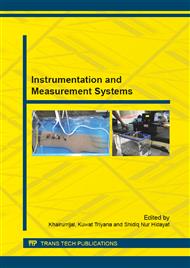p.174
p.179
p.183
p.187
p.191
p.195
p.200
p.204
p.209
In Situ Measurement of Thermal Resistance of Building Envelope at the Residential Occupancy in Indonesia
Abstract:
Abstract. This paper presents the measurement results of three building wall materials which are commonly used for residential housings in Indonesia, namely clay brick, batako (concrete brick), and precast concrete. In-situ measurement of the steady state thermal flow (heat flux) at building walls (envelopes) is conducted in order to determine the thermal resistance of building wall according to ASTM C1155. The results show that all three building materials having a thermal resistance values are far below the energy conservation provisions of ASHRAE 90.1 and especially when compared to the provision of high performance green building ASHRAE 189.1 It is found that precast concrete has higher thermal resistance (or has lower thermal conductivity) than that of other two materials, hence a better compliance to the ASHRAE standards.
Info:
Periodical:
Pages:
191-194
Citation:
Online since:
July 2015
Price:
Сopyright:
© 2015 Trans Tech Publications Ltd. All Rights Reserved
Share:
Citation:


